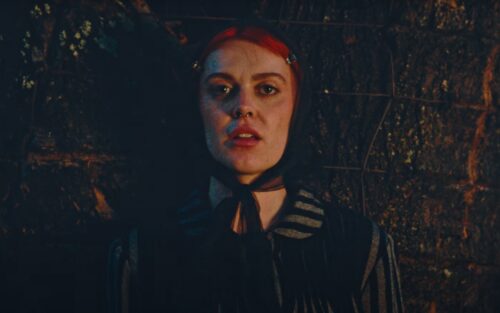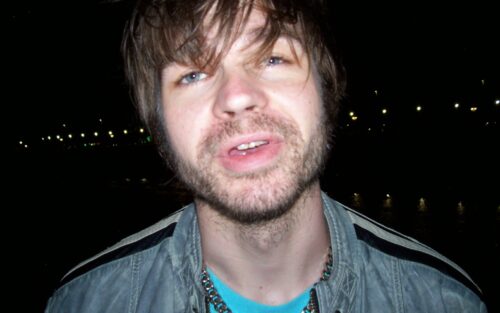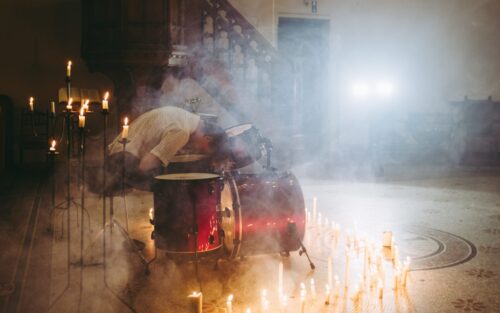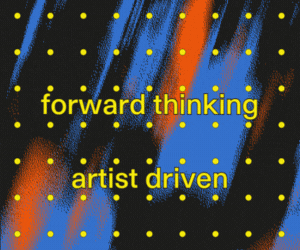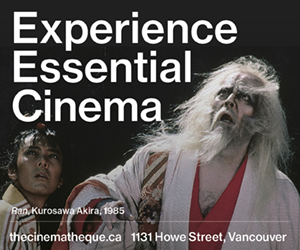Mattiel Find Their Gothic Groove In The Confines Of A Strip Mall
The indie pop duo wax poetic about the mythic city of Atlanta on new album, Georgia Gothic.
By Christine Leonard
Photo by Allison Donnelly
- Published on
“I think the biggest difference on this album was that we took our time and were able to highlight each other’s strengths writing-wise,” reflects guitarist/multi-instrumentalist Jonah Swilley of his collaborative retreat with vocalist Mattiel Brown. “I like to explore new sounds, so I use things like Mellotron and keyboards and stuff that we hadn’t used on a previous album. A great part of the time we had during COVID was trying out things that we hadn’t before and really focusing on experimenting with new instrumentation.”
For his counterpart, singer-songwriter Mattiel Brown, the haunting tales of misty peaks and forbidden valleys are the perfect framework for capturing the band’s passion for the ethereal past and the eminent present. “A lot of music that comes out of the South has a very descriptive aspect to it, like any gothic novel would be,” she remarks. “It’s all very spooky and weird. I feel like that’s part of the South, but also the gothic aspects of [Poe’s] The Raven or [Hemingway’s] For Whom the Bell Tolls – it’s all very fascinating stuff that I remember reading when I was a teenager.”
Carrying that spirit of curiosity and their love of juxtaposition into alternate realms on Georgia Gothic, Brown and Swilley tapped into their passion for art and history to bring the LP’s vivid tracks to life through the use of well-curated imagery. The videos for the album’s singles “Lighthouse,” “Blood in the Yolk” and “Jeff Goldblum,” which Mattiel performed on The Late Show with Stephen Colbert‘s #LateShowMeMusic series, abound with references to popular and classical culture while probing the boundaries of traditional iconography. “I love going to museums,” confesses Brown. “My long-time boyfriend is an art professor, so I get a secondhand education from him in art history, and artists, and styles that I might not have the context to understand otherwise. That’s a big part of my life. My art background spans from five or six years working in a tech studio and learning how to make productions and also doing a lot of graphic design work.”


Mattiel’s close connection to Atlanta’s art scene saw them bring their raw organic materials from backwoods cottage to big city market, where they began preparing the 10 tracks that would become Georgia Gothic for public consumption. Swilley began the process of bringing the album’s diverse forms together, eventually turning the intricate Georgia Gothic jigsaw over to John Congleton—a Grammy-winning producer whose resume includes Erykah Badu, Sleater Kinney, Angel Olsen, and Earl Sweatshirt—for completion. “Atlanta is such a utopia, it’s its own thing. It’s one of the most diverse cities,” enthuses Swilley. “People in Atlanta do a lot of really interesting artistic things that no one knows about. For instance, right now there’s a whole underground guest residency that’s pretty amazing. That’s where we rehearsed before this tour, in a friend’s studio, so we’ve really benefited a lot from the art community in Atlanta.”
“Definitely,” Brown confirms. “The place we recorded Georgia Gothic in was a strip mall that had gone up for sale, and they just had artists come in and fill the space for a period while it was waiting to be revamped. And now it’s gone. It’s vanished.”
“It was a multi-use space so there was a visual artist, a darkroom, screen-printing,” echoes Swilley. “We were very much in a multi-medium environment while we were recording the album.”
A conceptual experiment in balancing natural and manufactured elements on the tipping point, Mattiel’s music delves into deep balladry in a danceable fashion without missing a syncopated beat. Their deceptively sophisticated approach offers a rich and varied palette of tonal shades and textures to choose from as their sonic charcuterie vacillates effortlessly from crisp acoustic austerity to fleshy garage rock fantasy.
“I feel like we’re hitting at a really good time,” Brown observes. “Georgia feels like an isolated place where you can make your own thing. It’s not like LA and it’s not like New York. It is its own thing. And you can hear that if you’re listening to R.E.M. You can hear that if you’re listening to Outkast. You can hear that if you’re listening to the B-52s. It’s this bizarre Petri dish of ideas. Genre is not a wall that stands in front of what you enjoy or appreciate about a song, and I enjoy all genre crossovers.”
By Stephan Boissonneault
Nate Amos revisits a decade of stray ideas and turns them into his most compelling record yet.
By Khagan Aslanov
Mike Wallace’s electro-punk project premieres the hypnotic, percussion-driven video for "Certain Days."

